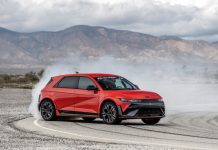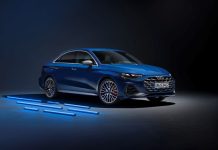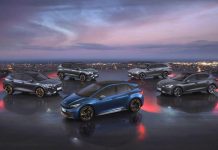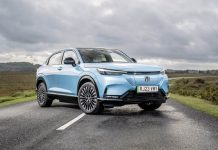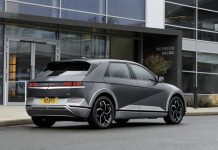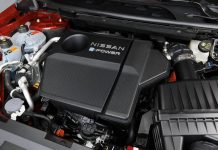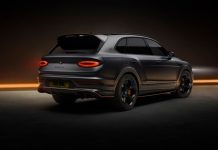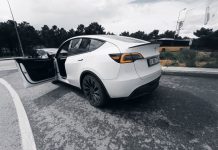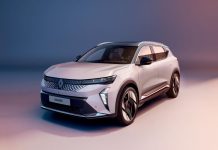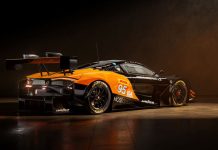Writer | Laçin MODIRI
Although it is difficult to tell which car was the first car in history, the Benz Patent Motorwagen, which was released in 1886 by Karl Benz which had the first internal combustion engine, is considered the first car. Meanwhile, as a result of the changes made by Rudolf Diesel on an engine prototype developed by Niepce Brothers in 1807, the Diesel engine has emerged. The first diesel cars were cars with Bosch injection engines produced by Daimler-Benz in the 1930s. 51 years before the Benz Patented Motorwagen, which is accepted as the first car, the first electric motor vehicle was invented by Davenport in Vermont, USA. At the same time, another electric vehicle was invented by Robert Anderson in Aberdeen, Scotland, between 1832-1839. By 1897, electric cars were very popular and the first electric taxis took place on the streets of New York. In the same year, Pope Manufacturing Corporation becomes the first large-scale American electric car manufacturer in Connecticut. By 1900, electric vehicles begin to experience their golden age. 28 percent of cars manufactured in the United States were powered by electricity, and electric cars accounted for about a third of all vehicles in cities such as New York, Boston, and Chicago. The demand for electric cars was higher than for petrol cars. Electric vehicles were preferred because of the vibration, noise and sound problems in gasoline-powered vehicles. However, in 1908 Henry Ford introduced the Model T, the new gasoline car that it had put into mass production. Ford’s move has not only completely changed the American car market, but has affected the car’s structure for more than a century. Although the same vehicle has come to the fore as a modern vehicle with a new electric motor developed by Edison, the internal combustion vehicle has become more popular due to a number of reasons such as the longer range of the vehicle and the easier access to gasoline. In 1912, very popular electric cars were replaced by gasoline-powered cars, which were cheaper because of mass production, and the automobile sector was formed by the domination of internal combustion engines. However, before the internal combustion engines took over, electric cars had many speed and distance records. Besides, they were more environmental-friendly, easy to use and comfortable. Although they both originated at the same time, it is not surprising that the internal combustion engine became popular and electric motors were shelved for many economic and political reasons. However, by the time that internal combustion engines productions started, the population of the world was 8/1 of today, about a 1 billion, and considering thetrace amount of people who could own a car and today’s numbers, I believe there is no place anymore for internal combustion engines, especially diesel engines. Today, cars cause 26% of the world’s energy consumption and carbon dioxide (CO2) emissions, which is the second largest consumption and emissions after the industry sector. Considering the increasing population in today’s world where the effects of global warming are being felt and the diseases caused by environmental pollution are increasing shows us this situation is not sustainable. In fact, from the 1960s the emergence of the air pollution problems and because of less damage to the environment, electric vehicles got on the agenda in the 1970s again. The increase in gasoline prices due to the OPEC Oil Crisis in 1973, led to the emergence of the search for an alternative to gasoline vehicles, and studies on electric vehicles gained speed again in this period, and as a result in 1974, Vanguard-Sebring’s CitiCar with a speed of more than 30 miles and a driving capacity of 50 kilometers has emerged. By 1975, the company took its place among the sixth largest automaker in the US, but just a few years later it was dissolved. With the Clean Air Law Amendment and Energy Policy Law in the 1990s and the supports on investments in this field, electric vehicles started to be on the agenda again. General Motors has completed the production of EV1, which was called “the world’s most efficient production vehicle”. In 1996, 1,117 rented vehicles were made available only to those in California, Arizona and Georgia. Although the vehicle was appreciated, it was collected after a certain period of time due to the expiry of the rental period and was thrown into the junkyard. Due to the charging and battery problems of electric vehicles, hybrid cars have come to the fore as an alternative. In 1997, a new era was opened in this field when Toyota produced the Prius, the world’s first commercially marketed and mass-produced hybrid car. Approximately 18,000 cars were sold in the first year and 50,000 cars were sold on the global market in the same year. Following Toyota’s move, models such as Honda’s EV Plus, G.M.’s EV1, Ford’s Ranger peak up EV, Nissan’s Altra EV, Chevy’s S-10 EV and Toyota’s RAV4 EV were produced by major automakers between 1997 and 2000. In 2006, Tesla took a revolutionary step in electric vehicles. Unlike other electric cars, Tesla’s car was designed to travel 200 kilometerswith a single charge and in 2011 reached a range of 240 kilometers with a car was named Roadster.This vehicle stood out with its clear superiority when compared to vehicles in its segment. For example, comparing to Bugatti Chironit was faster, its range was longer and its price was almost 12/1. Electric vehicles are superior to internal combustion engine vehicles in many aspects such as performance, noise and vibration, gear shifting, efficiency and driving pleasure. It has no alternative, especially in terms of CO2 emission and fuel consumption. And as a Toyota Corolla user, I’ve tried both gasoline and hybrid models and I would like to say that strongly prefer the hybrid version of this car. In addition, electric vehicles have a significant advantage over conventional internal combustion engine vehicles due to their simple structure, reliability and high efficiency. Because the engine of an electric vehicle has only five moving parts, but there are hundreds of parts inthe internal combustion engine. However,internal combustion engines still maintain their popularity because of the fact of still long charging the batteries of electric vehicles, not enough charging stations and insufficient distance of electric cars.Meanwhile, considering all R&D in the last century has been devoted to internal combustion engines and has just turned to electric engines for only a few years, with the development to be done in the field of batteries will be concluded with more efficient and cost-effective productions and widespreation of electric vehicles will be inevitable. At this point,hybrid cars have become an important alternative during the development process of electric cars although they are not a complete solution since they use internal combustion engines. The low efficiency and slow development of other alternative environmental-friendly engines make this alternative stronger. Today especially in Europe and the U.S. There are serious incentives for hybrid and electric vehicles such as tax breaks and free parking. Albeit late, governments are working on directing people to environmentalist vehicles. The best example in this regard is the northern European country “Norway”. Electric vehicles accounted for 42.4 percent of all cars sold in Norway and became the world leader in this field. One of the most striking cities in this regard is Amsterdam, one of Europe’s most problematic cities in air pollution. Electric vehicles in Amsterdam have increased their number significantly in the last few years and this situation has a positive effect on air pollution. The Amsterdam city council has announced plans to ban petrol and diesel cars, leaving only electric ones by 2030. In fact, this plan has been enacted or is waiting to be enacted, especially in many European countries. And as someone who has been passionate about cars since childhood, and who also loves and respectsnature and humanity, I believe environmental-friendly vehicles are a necessity for the future of ourselves, our loved ones and the world.






